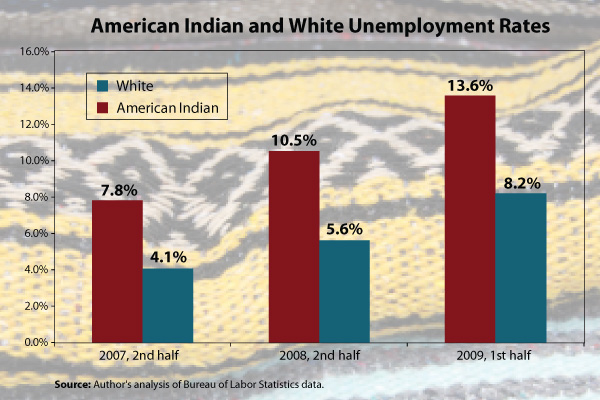By Algernon Austin
While white workers saw unemployment soar over the past year, American Indian workers suffered recession-level rates of unemployment long before the recession began. Like black and Hispanic workers, American Indian workers experience persistently high rates of unemployment in good times and bad. As the Figure shows, in the first six months of this year, the unemployment rate for whites averaged 8.2%, a level not seen since the early 1980s. However, that historically high rate of white unemployment is not far off the unemployment rate for American Indians before the recession began. In the latter half of 2007, the American Indian unemployment rate was 7.8%. As the economy worsened, the American Indian unemployment rate reached 10.5% by the second half of 2008, a full year before the overall U.S. unemployment rate moved into double digits. In the first half of this year, the American Indian unemployment rate reached 13.6%. Because of the small monthly sample size of American Indians in the household survey of unemployment, it is necessary to use six-month averages to obtain a sample size large enough for analysis.

The gap between American-Indian and white unemployment has also increased over the recession. In the latter half of 2007, it was 3.7 percentage points. In the second half of 2008, it was 4.9 percentage points. By the first half of this year, it was 5.4 percentage points. Other data suggest the jobs crisis for American Indians may be even worse than the unemployment numbers reflect. In order to be counted as unemployed, a person needs to be actively looking for work. People who have suffered long periods of unemployment often become discouraged and stop looking. The employment-to-population ratio for American Indians is much lower than for whites, suggesting that large numbers have dropped out of the work force and are not counted as unemployed.
This Economic Snapshot presents the national averages, but there is significant variation by region. See American Indians and the Great Recession for regional analyses of unemployment rates and employment-to-population ratios.